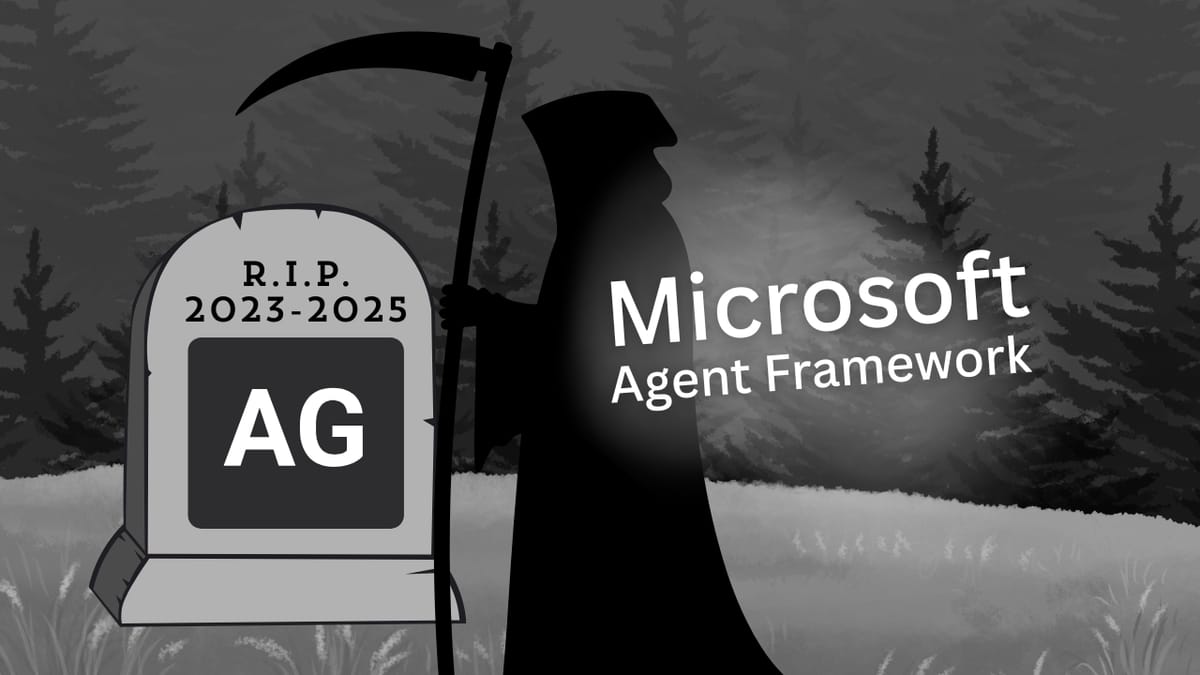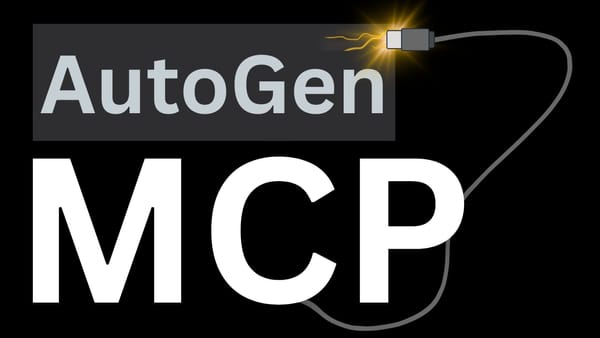Hello Microsoft Agent Framework (Bye Bye AutoGen!)
Microsoft just launched Agent Framework, combining AutoGen and Semantic Kernel into one unified platform. While AutoGen will only get bug fixes (no new features) so if you're using AutoGen, it's time to plan your migration.

What is Microsoft Agent Framework?
Microsoft basically took AutoGen and Semantic Kernel and said "let's stop confusing everyone with two different frameworks." The new Agent Framework combines the best parts of both and has full Python and C#/.NET support.
If you've been working with either framework, the good news is that you'll find similar patterns. I found it to be simpler now (still experimenting...) but it feels less bloated and more focused.
Will AutoGen still be maintained? Well, yes and no. Microsoft will patch bugs and security issues, but they're not adding new features. Translation: If you're starting a new project, go for Microsoft Agentic Framework.
The two biggest upgrades are Middleware and the new Workflow API. The Workflow API is a game-changer, replacing the old group chat patterns (like RoundRobinGroupChat and SelectorGroupChat) with a much more deterministic and controllable system.
Middleware Overview
Middleware gives you a flexible system for request/response processing, exception handling, and custom pipelines. It's the kind of infrastructure tooling that production systems need.
With AutoGen, you'd build these capabilities yourself or work around the framework. Agent Framework provides a built-in middleware system where you can stack multiple components that execute in order.
This alone makes the migration compelling if you're running agents in production environments that need consistent processing logic across all interactions.
The New Workflow API
Here's where it gets interesting. AutoGen's group chat was... let's say, not the easiest to manage. You'd set up agents but in some cases they wouldn't collaborate the way you wanted. Often times they did, but some other times they didn't.
Microsoft Agent Framework introduces workflows which is like flowcharts where each box is an agent or function, and the arrows show how data moves between them.
It supports the following orchestration patterns:
- Sequential (step by step)
- Concurrent (agents working in parallel)
- Handoff (passing responsibility between agents)
- Magentic (a manager agent coordinating everything)
The real advantage is workflow control which means that you can pause, resume, debug, and rewind workflows at any point. You can also add human intervention when needed. This gives you the debugging and control capabilities that were missing in AutoGen.
Sounds Familiar? You're Not Wrong
If you've used LangGraph, this workflow approach will feel familiar. Both frameworks use graph-based orchestration where nodes (functions/agents) are connected by edges that define data flow and execution order.
What's Really Happening Here
Let's be honest about this. Microsoft is consolidating their agent ecosystem. They're saying: "we're done with this fragmentation." They're taking AutoGen's innovative multi-agent patterns and Semantic Kernel's enterprise features and putting them in one place.
For anyone running agents in production, this is significant. You get the experimental patterns that made AutoGen popular, but with actual observability, security, compliance and all the stuff you need when your boss asks "is this ready for real customers?"
The Bottom Line
If you're using AutoGen, start planning your migration. Microsoft just told us where their agentic future is, and it's not with AutoGen.
The migration actually looks straightforward and Microsoft shared this migration guide to help us get started.
Agent Framework isn't revolutionary. It's just Microsoft finally building what we should have had from the start - a framework that works for both experimentation AND production.
AutoGen had its moment. Now it's time to move on.
Will you make the switch? Let me know in the comments.




